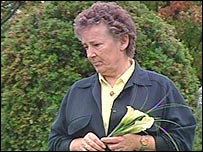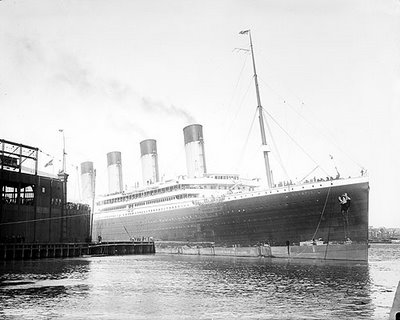
William McQuillan's family always thought their grandfather had been lost at sea when Titanic sank.
But more than 90 years later, his granddaughter was astonished to see William McQuillan's grave pictured in a television documentary.
Following up the information from the program, Marjorie Wilson became the first member of her family to pay their respects at the graveside in Nova Scotia, almost a century later.
William McQuillan lived in Belfast and was a stoker on the Titanic for her maiden voyage in April 1912. He was among the 1,503 people who died when the ship sank after striking an iceberg. McQuillan made it safely out of the engine room only to die in the icy waters of the Atlantic.
His body was subsequently recovered from the North Atlantic and taken with others to Halifax, Nova Scotia. The bodies that weren't shipped home by family members were buried in individually marked graves. William was identified by the Fireman's Union membership book found in his pocket.
Back in Belfast, however, it had been reported in the local newspaper that William McQuillan was one of those who had been lost at sea. For nearly 100 years, his family thought that was the end of the story.
A whole generation went to their graves believing he was one of the missing. In October 2005, the family was watching a BBC Newsline documentary about Titanic when they saw something they could scarcely believe.

The documentary included footage of a Halifax Cemetery and grave 183, that of William McQuillan. His granddaughter, Marjorie Wilson, contacted the BBC who were able to confirm the details and even provided a color photograph of the grave.
A year later Marjorie finally got to do what no family member had done before - lay flowers at the grave. She flew to Halifax. At the graveyard, a slow walk along the 121 gravestones brought her to an abrupt halt. In front of her was a simple granite stone "William McQuillan, Died 15 April 1912, 183".
Laying the flowers on the stone, she simply said, "Well, Grandpa, we've found you".
Many of the graves on the site bear no name. This touched Marjorie. Given how lucky she had been, she felt it was an opportunity that many had missed.
"It's sad and I'm lucky," she explained. "I've found my grandfather. But there are so many people out there who don't know if these unmarked graves could be their relatives."
It was an emotional moment tinged with the history of the moment.
Here in a sad monument to the world's most famous ship, a solitary woman from Belfast was finally standing at the grave of a grandfather she had never met.
But for the family, it was closure at last and a feeling of that history finally being laid to rest.
- Report courtesy the BBC
 The following photograph shows Olympic approaching her berth at the White Star pier in New York City. This is the same pier Titanic would have used upon her arrival at the end of her maiden voyage.
The following photograph shows Olympic approaching her berth at the White Star pier in New York City. This is the same pier Titanic would have used upon her arrival at the end of her maiden voyage.


